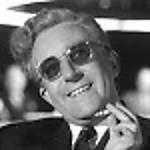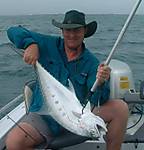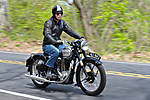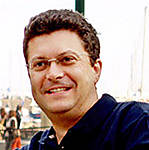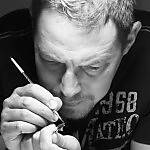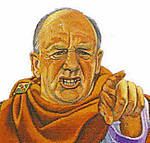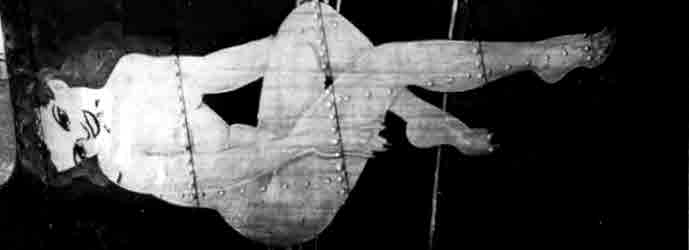
This isn't one of their current generation kits, which I understand are quite good, but rather one of their earlier releases that have some issues which range from minor to major. So I'm going into this with some intrepidation and caution. I've seen many of these built, so it's certainly buildable. The issue is to be able to bring it up to what I now call my person standards. My 1st choice was to do their -4 with the folding wings, but as the earlier of the two kits, it has issues with the shape and profile of the fuselage. the 2nd kitting, the -3, has an all new fuselage amoung other corrected parts, including non-folding wings. To do a correct -4 you would need to buy a -3 just for the fuselage. That's another project for another time.
The instructions of course start out with the cockpit, but with consultation with my brother, I opted to start with the Pratt & Whitney R-1830-66 Twin Radial Wasp engine. As usual I planned on just adding spark plug wires and some other details to enhance the look. The engine itself is a miniture kit. These are the parts needed jut to build the front bank of cylinders.

After doing some basic research on a few other builds, it became quite apparent that the engine has some major issues. He's a picture of the kit engine as dry fitted in Rodney Williams build located on the LSP site.

You can see that the pushrod tubes don't reach the valve covers, and the valve covers are at the wrong angle. Ok, so the 1st order od business was to cut off the pushrod tubes and drill out the ring.

then I cut .035 Evergreen rod to make new tubes. After test fitting a few rods into the valve covers, the gap is gone, but the angle is just as bad. I thought about filing down the tops of the cylinder heads, but rejected that as there is a tube that I'll be adding that goes across and it won't fit. Also the profile would be completely wrong. The issue is that Trumpeter just dreamed up the valve covers. Here's a picture of the real engine. You can see that the valve cover is cast so that the top is angled directly down the pushrod tube, while the bottom half is directly facing down the middle of the cylinder head.


Now that I know what the problem is, I had to admit with my limited modeling skills there is no way I could scratch out those covers. The next option was to buy the Vector Resin engine, which does indeed look correct. But the cost and shipping was over $40, so I just opted to live with what's in the kit, and with my modifications look somewhat better.
I painted both cylinder banks, crancases, and the exhaust MIG AMMO Black primer, then the cylinder heads, tube manifold, and wiring manifold were airbrushed with Alcad 2 Dark Aluminum, followed by a Black wash using Tamiya's Black recessed panel line wash. Then the pushrod tubes were installed and painted Tamiya X-1 Gloss Black.

Next I made the collars that secure the pushrod tubes to the valve covers from tape. Once painted flat Aluminum, they should fool the viewers eye. Here's a picture with them painted on the left and just tape on the right.

I dry fitted the engine and wasn't happy with the color of the crankcasing as it's just to light, so I repainted it a darker shade. The pushrods with the collars fill up the space in the valve covers and the overall look does seem much better then before.
Next up was the wiring of both banks of cylinders. Now I've always thought that the plug wires were rubber, but when Karl painted them a bronze color in his Airfix 1/72 B-17G build I asked why, and he said that for most of the war they used a bronze colored braid. The Rubber casings weren't used until very late in the war. Sure enough I checked my resources and what I thought was just an upgrade in restorations, some were actually Bronze. Thank you Karl for that bit of information.

So I wired the engine with .4mm lead wire from UMM-USA, and then painted it with a Bronze Yellowish color. Wiring took 3 days as the ignition manifold for some reason has the wire attachment fittings facing inward. No problem for the back bank, but for the front bank of cylinders they were almost completely under the cylinders. So I very carefully had to re-drill each hole after I had glued the manifold to the crankcase. How I didn't screw it up is beyond me.
Here's the almost completer P&W R-1830-66 engine. I still have some wiring on the crankcase to do as well as the rear housing. The crankcase is just dryfitted at this point.



And now you're all up to speed.
Joel







